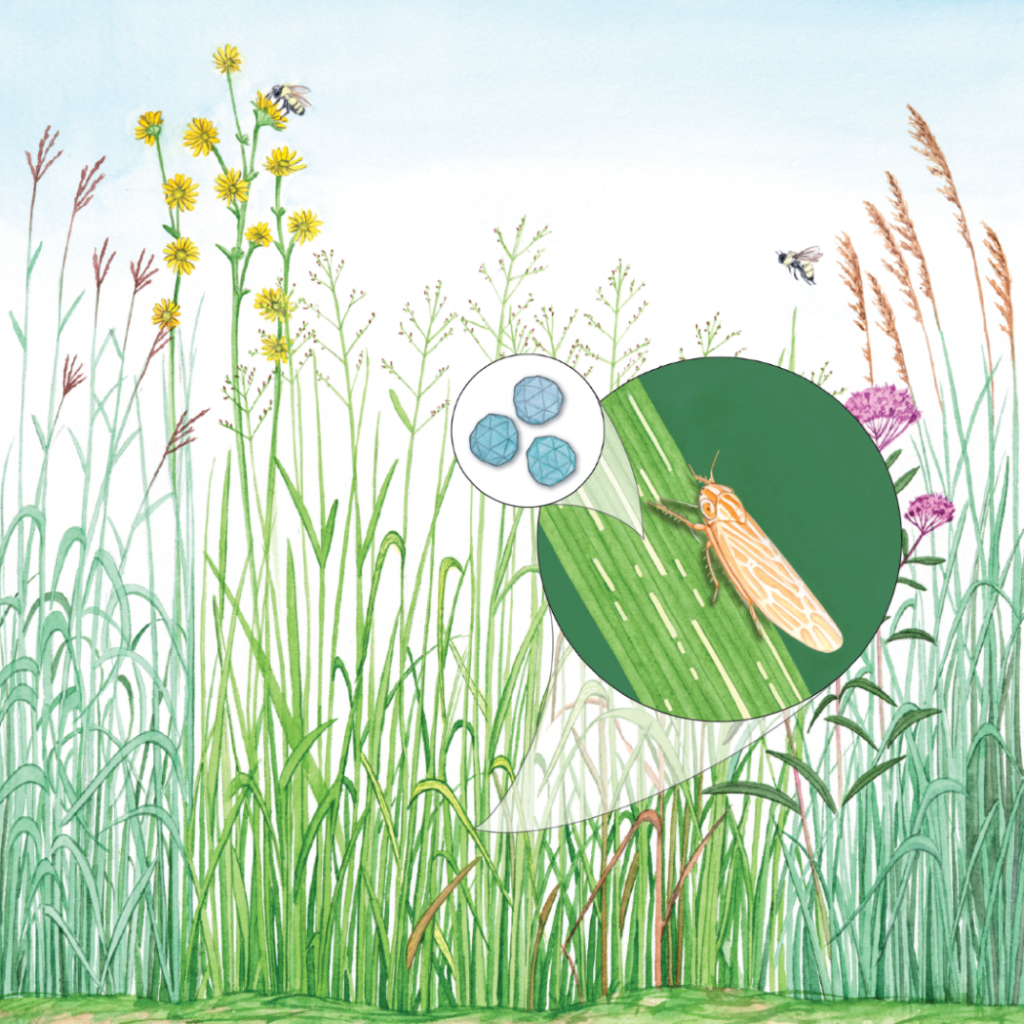
Tallgrass prairies are captivating plant communities filled with waving grasses and twinkling flowers. Bees and other insects zip through the foliage hunting for resources while birds perch on stems or hide nests under leaves. This wonderful diversity has drawn the attention of plant lovers for centuries. Now the modern tools of molecular biology have revealed additional biological complexity: Wild viruses inhabit the prairies too.
As ecologists, we wonder, How widespread are such viral infections? To what extent do they influence plant performance and plant ecology? These are key questions because plant-infecting viruses are powerful drivers of ecological change and plant evolution, but their influence in natural plant communities has been overlooked in most ecological research.
To learn more about virus interactions with native grasses, we examined the distribution and prevalence of a virus that infects Panicum virgatum (switchgrass), a native perennial prairie grass with a wide geographic range in North America. The virus is Switchgrass mosaic virus (SwMV), a +ssRNA virus in the genus Marafivirus, family Tymoviridae (Agindotan et al., 2010, J Virol Methods). SwMV is transmitted by leafhoppers, including the highly conserved species Graminella aureovittata (Agindotan et al., 2013, Can J Plant Path).
Our work began in affiliation with the US Dept. of Energy Great Lakes Bioenergy Research Center. We were assessing whether crop-infecting viruses might be harbored by switchgrass. We wanted to help ensure that deployment of this species as a new bioenergy crop wouldn’t inadvertently increase pathogen pressure on existing crops (e.g., Schrotenboer, Allen, Malmstrom 2011). So when we detected SwMV in field samples, we were intrigued. This virus appeared to be a wild virus not known to infect any current crops. We wondered how widespread SwMV infections were and how infections might influence native grasses.
As a first step, we used molecular diagnostics to survey switchgrass in established naturalistic stands throughout Michigan for evidence of infection. We also used sweep nets to collect leafhoppers in the switchgrass, identified them, and tested a subset for infection as well. Finally, we collected measures of switchgrass performance, including stand height and extent of early senescence during the 2012 drought year.
We found that SwMV was widespread and present in nearly all the stands we surveyed, with infection prevalence as high as 33–60%. This result indicates that SwMV is well-established in the region. We also found that SwMV infection was associated with increased premature senescence of switchgrass, suggesting that it has potential to reduce yield under some circumstances. This was intriguing because wild viruses are typically thought to have evolved largely benign relationships with their hosts.
Building on these findings, we have since conducted a long-term study of SwMV — switchgrass interactions and investigated the genomic basis for host susceptibility, about which we will post more soon.
For more information about SwMV in the Midwest USA, please see: Malmstrom, C. M., Busch, A. K., Cole, E. A., Trebicki, P., Bernardo, P., Brown, A. K., Landis, D. A., & Werling, B. P. (2022). Emerging wild virus of native grass bioenergy feedstock is well-established in the Midwestern USA and associated with premature stand senescence. GCB Bioenergy, 14, 463– 480. https://doi.org/10.1111/gcbb.12927